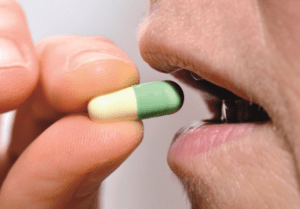 The final results of EFFECTS (Efficacy of fluoxetine: A randomised controlled trial in stroke) have been presented by Erik Lundström (Uppsala University, Uppsala, Sweden) during a large clinical trials webinar hosted jointly by the European Stroke Organisation (ESO) and the World Stroke Organisation (WSO), on 13 May.
The final results of EFFECTS (Efficacy of fluoxetine: A randomised controlled trial in stroke) have been presented by Erik Lundström (Uppsala University, Uppsala, Sweden) during a large clinical trials webinar hosted jointly by the European Stroke Organisation (ESO) and the World Stroke Organisation (WSO), on 13 May.
Fluoxetine once daily, six-months after an acute stroke, did not improve functional outcome, the trial found. While fluoxetine reduced depression, it increased the incidence of fractured bones and hyponatraemia. Taking these factors into account, Lundström concluded: “We do not recommend the routine use of fluoxetine after acute stroke.”
Why test fluoxetine?
He told the viewers that the idea was to take a known drug, “used by millions”, and try it for a new indication. Otherwise known as Prozac, fluoxetine is a commonly prescribed antidepressant.
After looking into a meta-analysis of animal stroke studies, the team found that fluoxetine improves neurobehavioural outcome by over 50%. Lundström speculated that this was most likely due to increasing neuroplasticity within the brain. “There is evidence for neurogenesis; there is evidence for neuroprotection, and there is evidence that it acts on the adrenergic system,” he said.
But, according to Lundström, what really ignited the team’s interest in fluoxetine was the FLAME trial, published in The Lancet Neurology in 2011. “In this randomised controlled trial of 118 ischaemic stroke patients with hemiparesis, 17% more of the patients allocated to 20mg fluoxetine were independent at three months, compared to the placebo [group].”
He also alluded to a Cochrane review of selective serotonin reuptake inhibitors (SSRIs) for stroke recovery published in 2012. While the review demonstrated that SSRIs reduce neurological impairment, anxiety and depression after stroke, Lundström acknowledged there was heterogeneity between the studies. “Large, well-designed trials were needed to determine whether SSRIs should be given routinely to patients with stroke.
“This led us to develop a family of three trials, with a similar core protocol that was slightly tailored to national settings: FOCUS in the UK, EFFECTS in Sweden, and AFFINITY in Australia, New Zealand and Vietnam,” he added. The three trials together have recruited a total of 5,907 patients. The findings of FOCUS, which turned out to be neutral, were published in December, 2018, Lundström said.
EFFECTS: The findings
Fluoxetine daily for six-months after an acute stroke did not improve functional outcome. “The common odds ratio was 0.96 [95% CI 0.78, 1.13; p=0.41], so no benefit of fluoxetine,” Lundström reported.
Nevertheless, the results pointed to the fact that fluoxetine was safe in the stroke population as Lundström put forward that there was no treatment-related death, mortality was low, and there were no differences (between fluoxetine and placebo) in acute coronary events, epileptic seizures, and bleeding events.
While the number of new depression was reduced by just under 4%, the number of fractured bones increased by 2.2%, and hyponatraemia by 1.34%.
In terms of the inclusion criteria, patients 18 years or over were included in the trial. Those with either ischaemic stroke or intracerebral haemorrhage were randomised two to 15 days after onset. Lundström highlighted that patients needed to have persisting focal neurological deficit present at the time of randomisation severe enough to warrant treatment from both the physicians and the patients perspective. The “important” exclusion criteria he alluded to included: epilepsy, depression, previous drug overdose or attempted suicide, allergy or contraindication to fluoxetine, and life-threatening illness that would make 12-month survival unlikely.
“Both groups were well balanced, with a median age of 71 years,” Lundström told the viewers, discussing the baseline characteristics. “Around 98% of the population were independent before their stroke. Eighty-eight per cent had an ischaemic stroke. The median National Institutes of Health Stroke Scale (NIHSS) score was 3,” he added.













